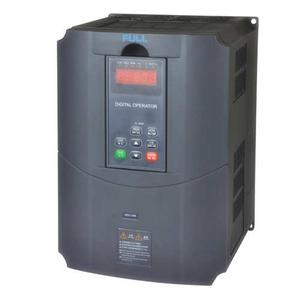The difference between domestic inverter and foreign brands
2021-08-10 11:05:35
 In the frequency converter market, domestic brands and foreign brands, whether in technology, processing and manufacturing, industrial design, or financial strength, have a gap with foreign brands and are still unable to shake the dominance of international brands.
In the frequency converter market, domestic brands and foreign brands, whether in technology, processing and manufacturing, industrial design, or financial strength, have a gap with foreign brands and are still unable to shake the dominance of international brands. In terms of the number of brands, domestic brands accounted for more than 70%, but the market share was only about 24%. Although the market share of domestic-funded brands is rapidly expanding, most markets are still occupied by more than a dozen European and American brands and Japanese brands. At present, the industry has begun to take shape and its development potential is very impressive. Industry insiders believe that China's inverter market will not reach saturation until the next 10 years, during which the annual growth rate of the market will remain above 15%. However, in 2009, due to the financial crisis, the growth rate of the industry's market capacity will slow down significantly.
The strength of China's inverter supporting industry is relatively weak. Overall, domestic brands have gaps with foreign brands in terms of technology, manufacturing, industrial design, and financial strength, especially with the giants of Siemens and ABB. More obvious than the gap. At present, the share of foreign brands in the domestic low- and medium-voltage inverter market is basically the same as in 2007, and it still remains at around 76%. At the same time, due to factors such as increased investment in basic projects (traditional advantages of leading brands in Europe and America) in 2008, The industry concentration of the top ten foreign-funded enterprises has increased, especially the share of leading brands in the industry has further expanded. Most of the local inverter companies are mainly V/F control products. For the products with superior performance and high technical content, such as vector inverters, most domestic-funded enterprises have not yet developed mature products. Although some well-established domestic brands such as Shenzhen Inventronics and Chengdu Hope Senlan have already come out with vector inverter products and achieved breakthroughs in some market applications, compared with international giants, the types and specifications of their products still need to be furthered. Enriched and enriched.
The share of local brands has expanded rapidly, and the strength of local dominant brands has risen rapidly. However, most of the market share is still dominated by the top ten foreign brands occupying the Chinese market, attracting foreign investment, such as Siemens, ABB, Mitsubishi and Yaskawa. The domestic frequency converter market started with the entry of foreign brands, and the foreign brands were predominantly dominant until around 2000, which also accounted for about 90% of the market share. With the rise of local brands, the market share of domestic-funded inverter companies has gradually expanded, especially in recent years, there has been a trend of accelerating the substitution of foreign brands. In 2005, the share of domestic brands in the low- and medium-voltage inverter market was only about 15%. It reached 20% in 2006 and was further expanded to 24% in 2007. In 2008, it was affected by the financial crisis, and many of the basic engineering projects started in the year were initiated in China. The project is the traditional advantage market of leading inverter brands in Europe and America. Domestic brands failed to expand their influence and continued to maintain a market share of 24%.
Muliti-Color Shoe Bag,Shoe Bag,Portable Shoe Bag,Clothing Golf Shoe Bag
Grand Dragon Sports Company Limited , https://www.golfyy.com